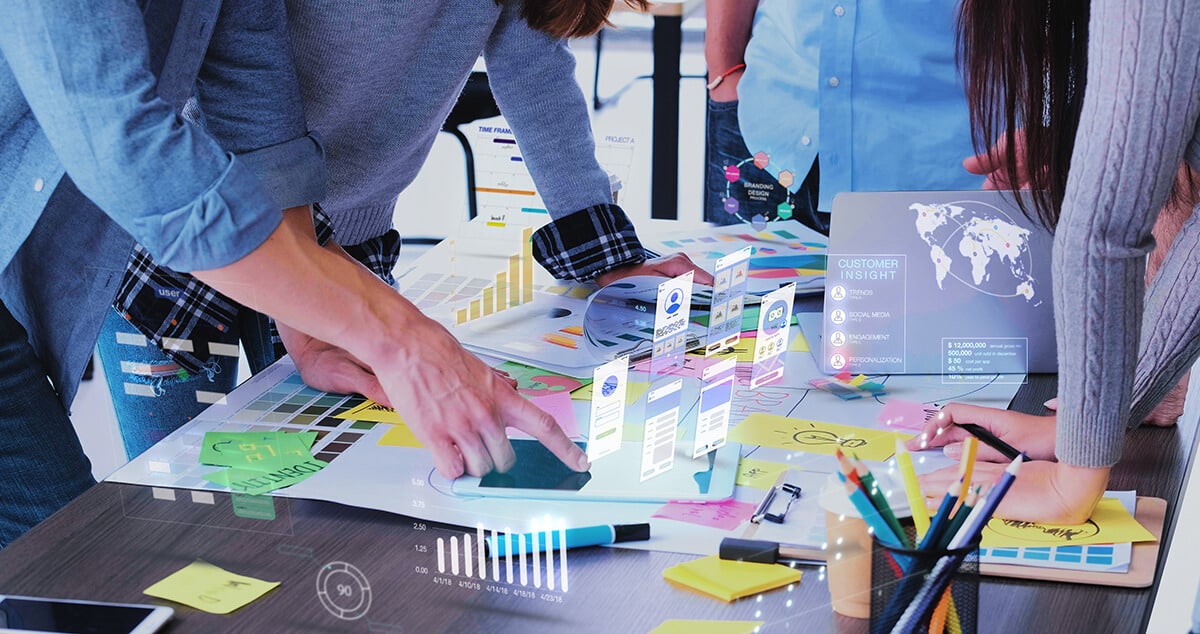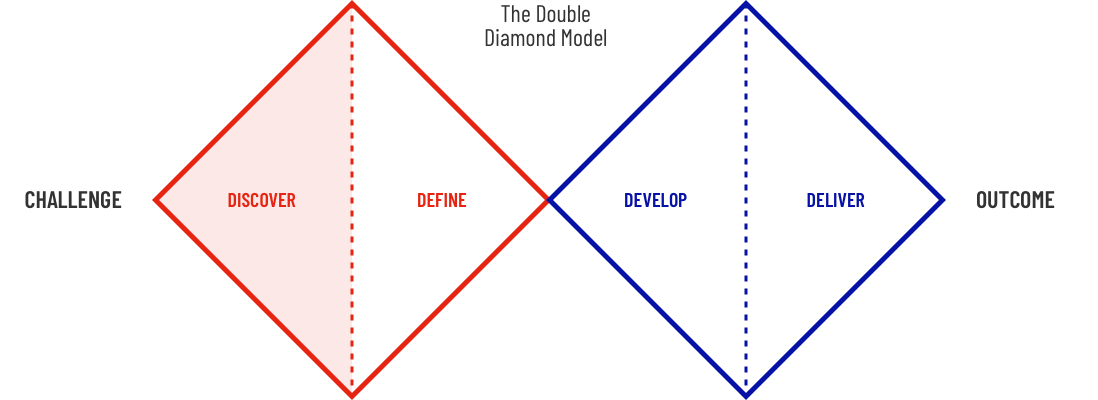When a new project starts there’s a certain vibe throughout the team, like an adrenaline rush. We get to be the first to play with the new shiny toy, twist it and turn it on all sides. We learn about it and take pride in defining it for the rest of the team. This preliminary phase of the project is a Design Discovery.
Effective Design Discoveries are broad and focus on gathering information to set the project up for success. This includes researching the product and the industry. Understanding the problem and the needs of the current and future users of the product. And include framing the initial direction for the design phase.

Discoveries are for identifying many potential solutions to the challenge. They provide clarity into the project, align goals, and set expectations. This enables the team and stakeholders to identify desirable, feasible and viable solutions in later stages of the project.

Understand the Problem
One of the most important outcomes of a discovery is defining the goals. Discoveries limit guesswork by aligning stakeholder expectations, their needs and pain points. This sets the direction for the “Define” section of the discovery process. These efforts focus on collecting evidence to identify the problem and set the guiding principles for the production phase of the project.
At this point, the team begins investigating and researching to gain clarity on the project. This includes its intended users, the industry and even competitors.
Design discovery can be a powerful tool for clients, helping them gain valuable insights into their project and identify opportunities for improvement. It can help them refine their ideas and create the best possible product.
– Kim Conway, Client Experience Manager
Focus the Efforts
When running a discovery, it’s important to keep in mind that this phase includes a wide range of stakeholders. Coming from different backgrounds, each of them are experts in their field. The intention of the discovery is to lead the group to finding the common ground between their departmental expectations, perceptions of the product, and expectations of the project.
The key to getting a clear picture of the problem and potential solution(s) is to always confront these with actual, relevant data from your current/potential users. We rarely are the users of the products we create or design. Discoveries allow us to pinpoint not only the problem we deal with but also the best available solutions for our target users.
I see discoveries like insurance… they reduce the risk of the end product. We have seen companies that did not invest in their design discovery spending double the amount to fix and realign the deliverable later on.
– Adam Buckeridge, Director of Client Experience
A Cohesive Vision
Skipping the discovery phase and jumping into design and development is risky. Without the valuable feedback and input captured during discovery, a project is at risk to go off course. Not only affecting timeline and budget, but ultimately the relationship between agency and client.
Discoveries unite team members from both sides of the project: the client and the agency. They also provide the opportunity to reach consensus on the identified problem and possible solutions. When the entire team understands the user base, they are able to identify their needs and habits. With this established, the project will focus on finding the right solutions range to solve the common goal. The added synergy between all stakeholders and project team will have a tremendous impact on the project’s health and success.

No More Assumptions
A successful discovery brings clarity to the entire process, from strategy, to design and development. All while laying the foundation for post-launch growth opportunities for the project. The role of discoveries is to put every option on the table, no matter how far-fetched it may sound.
The discovery team should approach it with an open and inquisitive mindset. Together they will narrow down the must-haves and the nice-to-haves. Prioritizing the options and ideas that have the biggest impact on the agreed upon goal of the project. Once that is done, the discovery will have reached its goals:
- Add clarity and eliminate confusion
- Establish a clear, realistic timeline
- Set a realistic budget
- Limit scope creep and additional costs
- Accelerate the production process
While all projects are unique, incorporating a discovery phase gives a solid, unified foundation to build a solution. Discoveries help teams identify, evaluate and formalize the best ideas. They enable clients and agencies alike to have a clear understanding of the project’s goals, requirements, features, timeline, costs, and even the structure of the production team.
Ready to find out more?
At Crowd Favorite we specialize in elevating the future of the digital experience our partners need. If you’d like help with getting started or need a partner to work alongside you through your digital transformation, please reach out to us.



